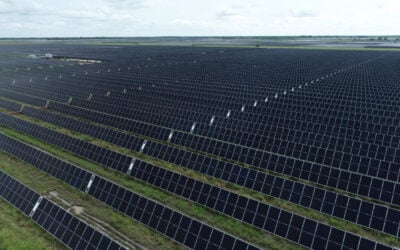
National Grid ESO, the electricity system operator tasked with keeping the lights on in the UK, is looking to enable multiple application stacking for providers of a new frequency response service that also participate in the national Balancing Mechanism.
As part of the development of Dynamic Containment (DC), a frequency response ancillary service launched softly in October of last year to kick off an overhaul of the grid services market, National Grid ESO wants to allow providers to be able to stack their DC revenues with revenues they can earn from the Balancing Mechanism, which is the real-time balancing of supply and demand in the network and a key source of income for many battery energy storage assets.
Enjoy 12 months of exclusive analysis
- Regular insight and analysis of the industry’s biggest developments
- In-depth interviews with the industry’s leading figures
- Annual digital subscription to the PV Tech Power journal
- Discounts on Solar Media’s portfolio of events, in-person and virtual
Leading battery storage asset owners and optimisers in Britain such as such as Arenko and Flexitricity have begun providing frequency response through the Dynamic Containment market. Going forward, batteries will be able to tender for bids in both the BM and Dynamic Containment during the same periods. It has set a target go-live date of 10am on Wednesday 27 January.
“From market engagement, we recognise the additional value that adding the ability to stack in the BM will offer,” National Grid ESO wrote in a document detailing the change. “We anticipate this additional flexibility and revenue stacking will increase the efficiency of battery assets delivering the service, increase competition which would in turn reduce costs to the consumer.”
Given the crucial nature of the Dynamic Containment service, National Grid ESO has taken a cautious approach to allowing the stacking of Bid Offer Accepted (BOA) assets. Those wishing to participate in the BM must ensure such activity does not erode or compromise the ability to deliver Dynamic Containment therefore.
There are a number of general principles participants must adhere to in order to stack the two going forwards, including ensuring asset Maximum Export Limit (MEL) and Minimum Import Limit (MIL) accurately reflect the physical capability of the unit, that pricing data can be used to 'price out' tranches of capability, and Operational Baseline (OB) matches physical capacity, along with other cautions.
National Grid ESO ‘excited to add stacking capability’
With battery energy storage considered a versatile asset that can perform multiple tasks and applications to benefit the grid or utility when installed in front-of-the-meter (FTM), the ability to 'revenue stack' – gain multiple revenue streams from performing these different applications – has long been discussed as a key enabler of strong business cases for battery projects. However the regulatory, policy and market frameworks often move slower than advances in the technological capabilities of battery storage and revenue stacking is only allowed to certain degrees in some markets.
“We are excited to add the capability of BM stacking to the new Dynamic Containment service as part of frequency reform,” National Grid ESO stated. “We plan to include this capability for all new services that are introduced to the market as we recognise the additional value that adding the ability to stack in the BM will offer.”
Dynamic Containment was widely welcomed in 2020, as not only a significant tool for National Grid ESO but also for providing a strong return for participants, offering 2-3 times the price of other frequency response services. By allowing stacking, the value proposition for battery storage in the UK continues to grow.
As the amount of intermittent renewables continues to grow in the UK, the need for balancing services has increased. Low winds and cold temperatures for example drove the imbalance price to a record high of £4,000/MWh this January. This further contributes to the strong cased for increased BM access.
“We anticipate this additional flexibility and revenue stacking will increase the efficiency of battery assets delivering the service, increase competition and reduce costs,” National Grid ESO wrote on LinkedIn.
This story originally appeared on our UK energy transition site Current±. Adapted for Energy-Storage.news by Andy Colthorpe.
Our publisher Solar Media will be hosting the Energy Storage Summit 2021 in an exciting new format on 23-24 February and again on 3-4 March. See the website for more details.






